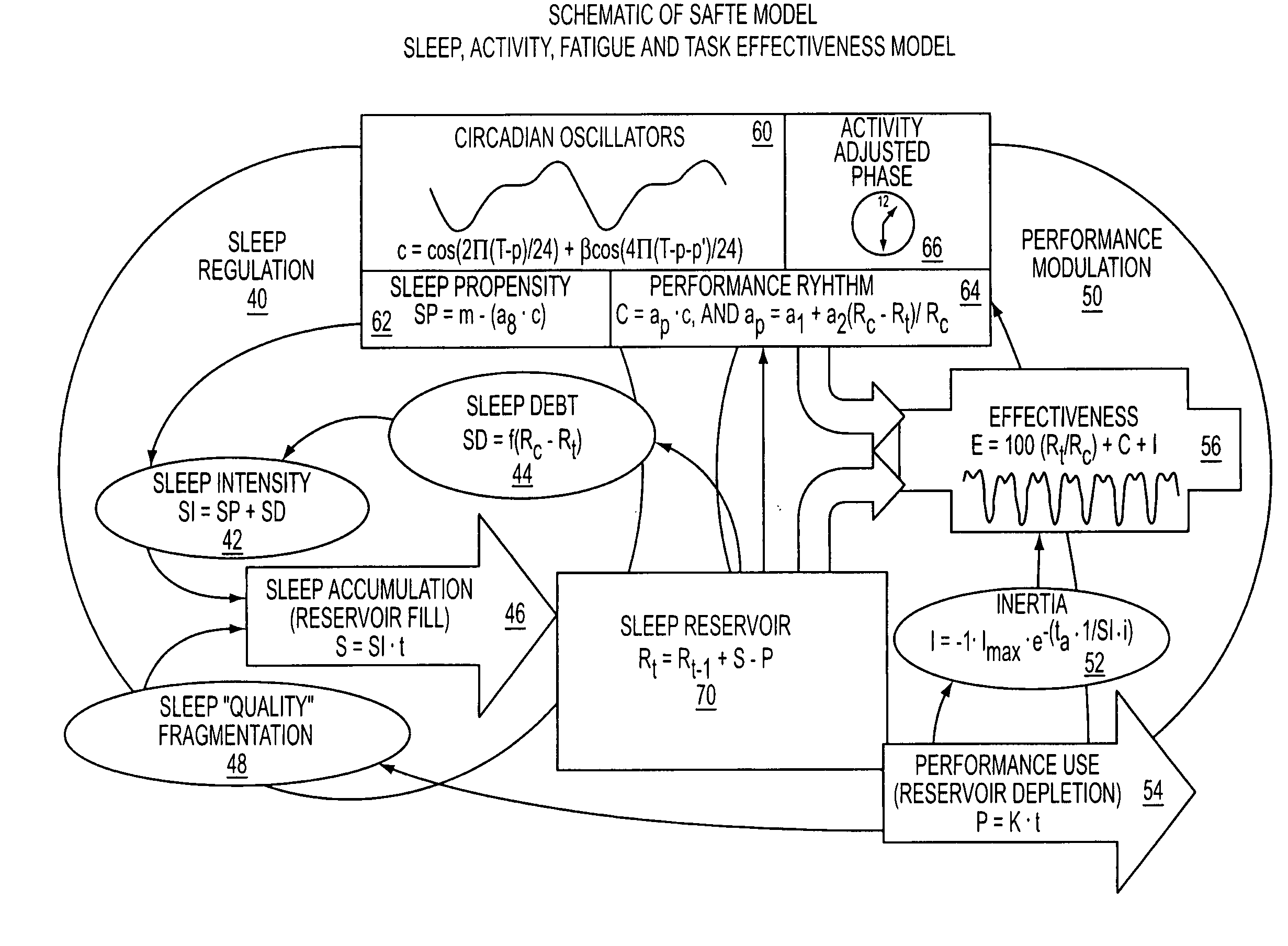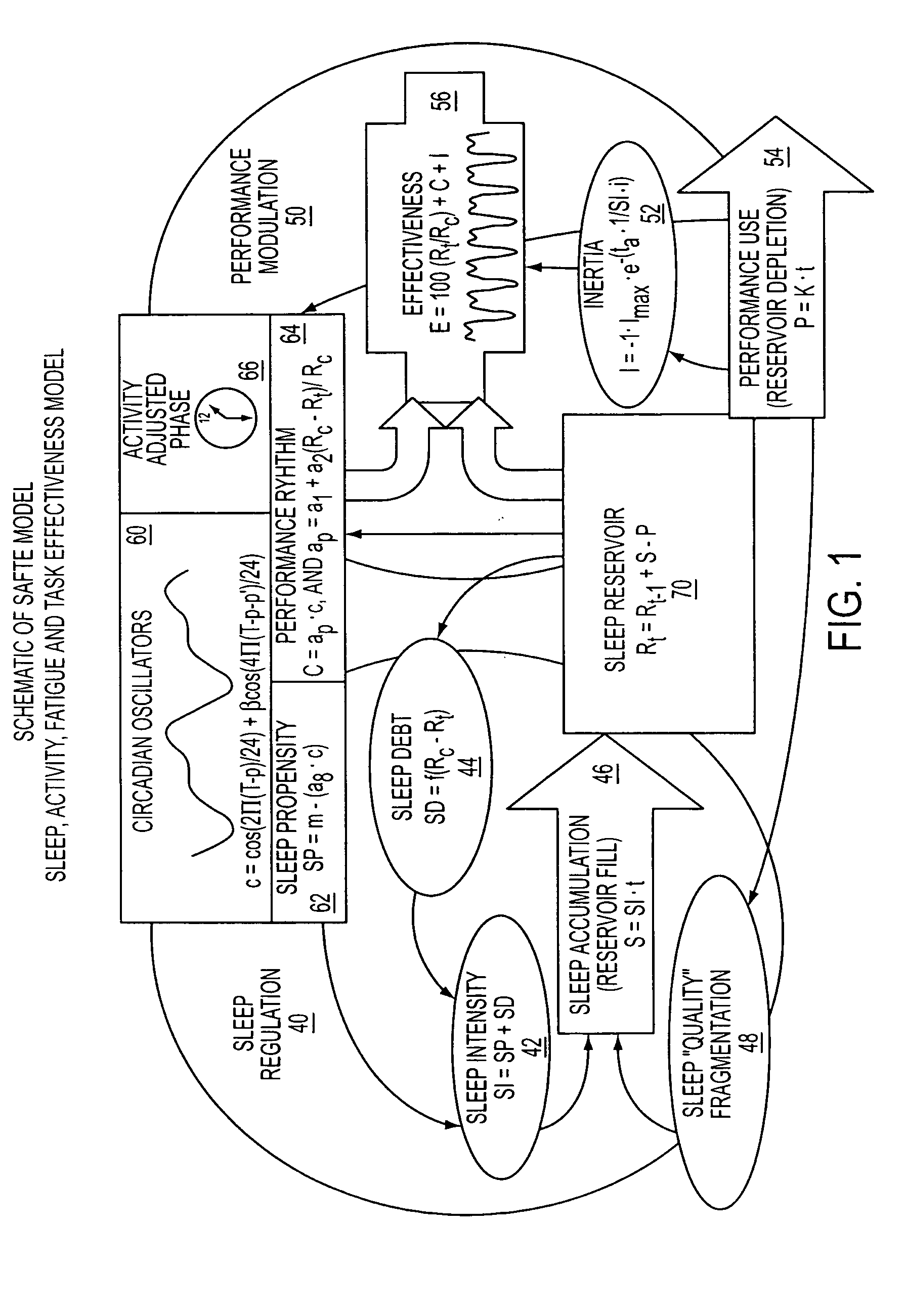Evaluating task effectiveness based on sleep pattern
a task effectiveness and sleep pattern technology, applied in the field of task effectiveness evaluation based on sleep pattern, can solve the problems of prior studies and patents not providing an easy-to-use interface for a system, jk model does not make an independent prediction of performance, prior studies and patents do not utilize both actual sleep data and predicted sleep data to predict future changes in task effectiveness
- Summary
- Abstract
- Description
- Claims
- Application Information
AI Technical Summary
Benefits of technology
Problems solved by technology
Method used
Image
Examples
Embodiment Construction
[0065] The method and system for evaluating the effectiveness of a person to perform a specific task accessed through the interface of the present invention, is illustrated in FIG. 1. A user can employ the system to predict modulation of performance based on regulation of a sleep pattern. The factors utilized to regulate sleep are broadly indicated in the sleep regulation section 40, shown in FIG. 1. These factors include sleep intensity 42, sleep debt 44, sleep accumulation 46, and sleep quality or fragmentation 48. Performance modulation section 50 contains factors that are used for such performance modulation, including circadian rhythm 64, sleep inertia 52, effectiveness 56 and performance use 54, as shown in FIG. 1.
[0066] A circadian process 60 influences both the performance modulation 50 and sleep regulation 40. Sleep regulation 40 is dependent on the hours of sleep and wakefulness, current sleep debt, the circadian process, which is represented by the circadian oscillators ...
PUM
 Login to View More
Login to View More Abstract
Description
Claims
Application Information
 Login to View More
Login to View More - R&D
- Intellectual Property
- Life Sciences
- Materials
- Tech Scout
- Unparalleled Data Quality
- Higher Quality Content
- 60% Fewer Hallucinations
Browse by: Latest US Patents, China's latest patents, Technical Efficacy Thesaurus, Application Domain, Technology Topic, Popular Technical Reports.
© 2025 PatSnap. All rights reserved.Legal|Privacy policy|Modern Slavery Act Transparency Statement|Sitemap|About US| Contact US: help@patsnap.com



